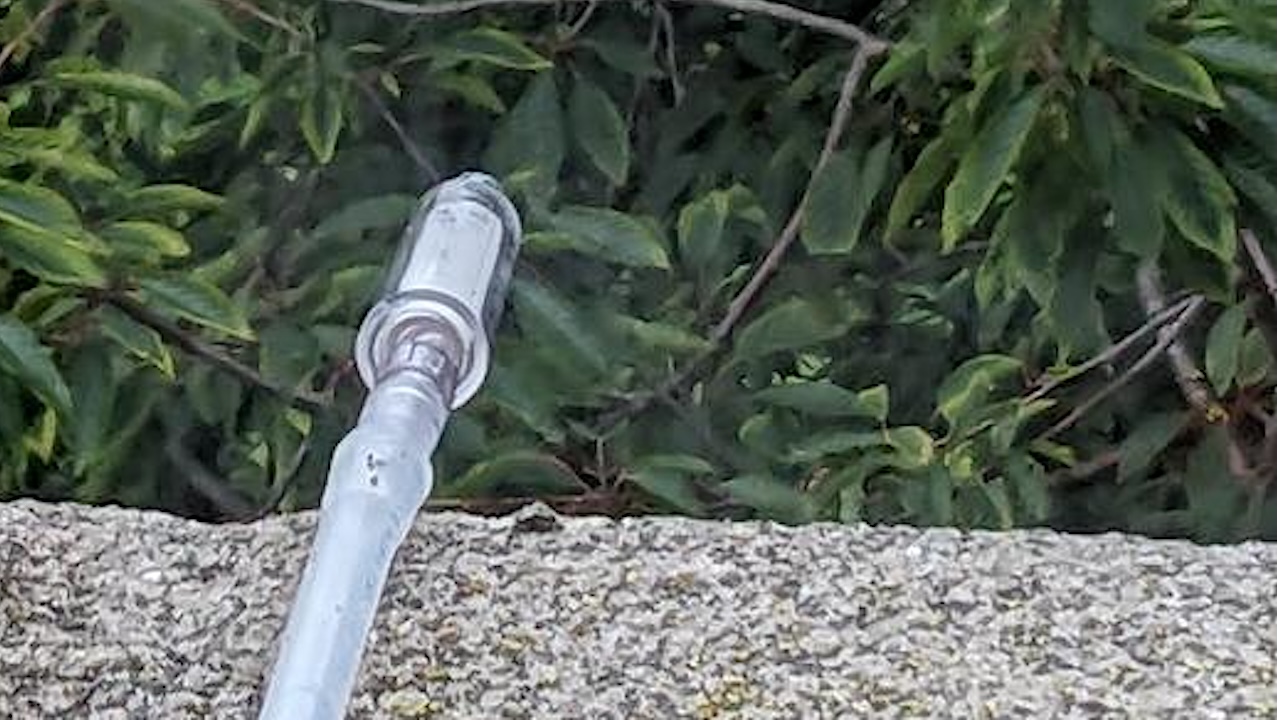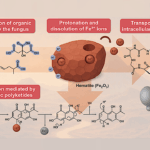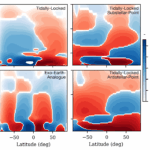Now Reading: Chemoautotrophy In Subzero Environments And The Potential For Cold-adapted Rubisco
-
01
Chemoautotrophy In Subzero Environments And The Potential For Cold-adapted Rubisco
Chemoautotrophy In Subzero Environments And The Potential For Cold-adapted Rubisco


Rubisco form II structural differences between T. arctica UC1 and H. marinus. (A) AlphaFold-generated structures for H. marinus (transparent white) and T. arctica UC1 (dark blue) Rubisco form II dimers. Active sites are colored red. Arrows point to the additional exposed active site residues in UC1 compared to H. marinus. The missing residues in UC1 at amino acid positions 78–82 (Fig. 4) are colored yellow on H. marinus structure (a close-up view in B). (C) UC1 form II dimer with residue differences to H. marinus that confer a semi-conservative or non-conservative change highlighted in orange. — Applied and Environmental Microbiology via PubMed
The act of fixing inorganic carbon into the biosphere is largely facilitated by one enzyme, Rubisco. Beyond well-studied plants and cyanobacteria, many bacteria use Rubisco for chemolithoautotrophy in extreme environments on Earth.
Here, we characterized the diversity of autotrophic pathways and chemolithoautotrophic Rubiscos from two distinct subzero, hypersaline Arctic environments: 40-kyr relic marine brines encased within permafrost (cryopeg brines) and first-year sea ice. The Calvin-Benson-Bassham (CBB) cycle was widely found in both environments, although with different predominant Rubisco forms.
From cryopeg brine, reconstructions of metagenome-assembled genomes (MAGs) uncovered four MAGs with the potential for chemolithoautotrophy, of which the CBB-containing genus Thiomicrorhabdus was most abundant. A broader survey of Thiomicrorhabdus genomes from diverse environments identified a core complement of three Rubisco forms (II, IAc, IAq) with a complex pattern of gain and loss, with form II constitutively present in genomes from subzero environments. Using representative kinetic data, we modeled carboxylation rates of Rubisco forms II, IAc, and IAq across CO2, O2, and temperature conditions.
We found that form II outcompetes form I at low O2, but cold temperatures minimize this advantage. Inspection of form II from genomes from cold environments identified signals of potential thermal adaptation due to key amino acid substitutions, which resulted in a more exposed active site.
We argue that subzero form II from Thiomicrorhabdus warrants further study as it may have unique kinetics or thermal stability. This work can help address the limits of autotrophic functionality in extreme environments on Earth and other planetary bodies.
IMPORTANCE Autotrophy, or the fixation of inorganic carbon to biomass, is a key factor in life’s ability to thrive on Earth. Research on autotrophy has focused on plants and algae, but many bacteria are also autotrophic and can survive and thrive under more extreme conditions. These bacteria are a window to past autotrophy on Earth, as well as potential autotrophy in extreme environments elsewhere in the universe. Our study focused on dark, cold, saline environments, which are likely to be found on Enceladus and Europa, as well as in the Martian subsurface.
We found evidence for potential cold adaptation in a key autotrophic enzyme, Rubisco, which could expand the known boundaries of autotrophy in rapidly disappearing icy environments on Earth. We also present a novel model framework that can be used to probe the limits of autotrophy not only on Earth but also on key astrobiological targets like Enceladus and Europa.
Chemoautotrophy in subzero environments and the potential for cold-adapted Rubisco, Applied and Environmental Microbiology via PubMed (open access)
Astrobiology,
Stay Informed With the Latest & Most Important News
Previous Post
Next Post
-
 01From Polymerization-Enabled Folding and Assembly to Chemical Evolution: Key Processes for Emergence of Functional Polymers in the Origin of Life
01From Polymerization-Enabled Folding and Assembly to Chemical Evolution: Key Processes for Emergence of Functional Polymers in the Origin of Life -
 02Panasonic Leica Summilux DG 15mm f/1.7 ASPH review
02Panasonic Leica Summilux DG 15mm f/1.7 ASPH review -
 03How New NASA, India Earth Satellite NISAR Will See Earth
03How New NASA, India Earth Satellite NISAR Will See Earth -
 04And Thus Begins A New Year For Life On Earth
04And Thus Begins A New Year For Life On Earth -
 05Astronomy Activation Ambassadors: A New Era
05Astronomy Activation Ambassadors: A New Era -
06SpaceX launch surge helps set new global launch record in 2024
-
 07Two Black Holes Observed Circling Each Other for the First Time
07Two Black Holes Observed Circling Each Other for the First Time




















